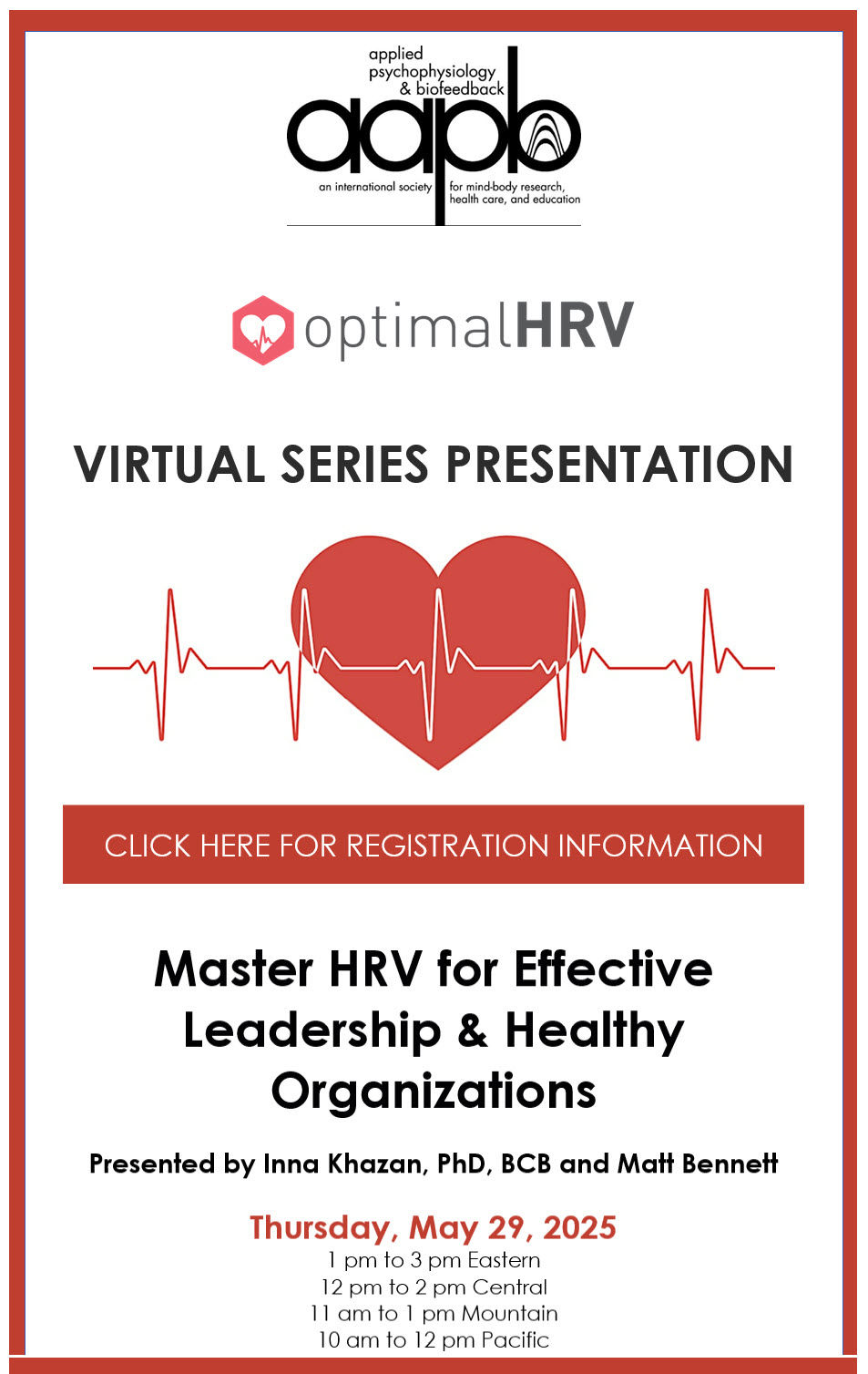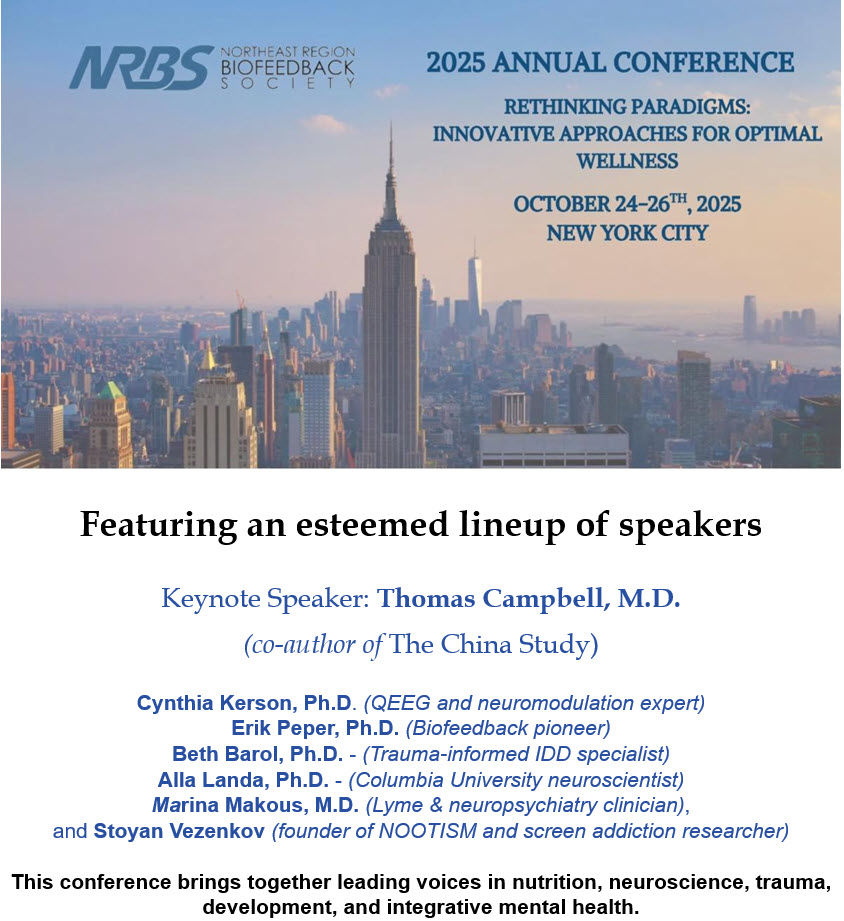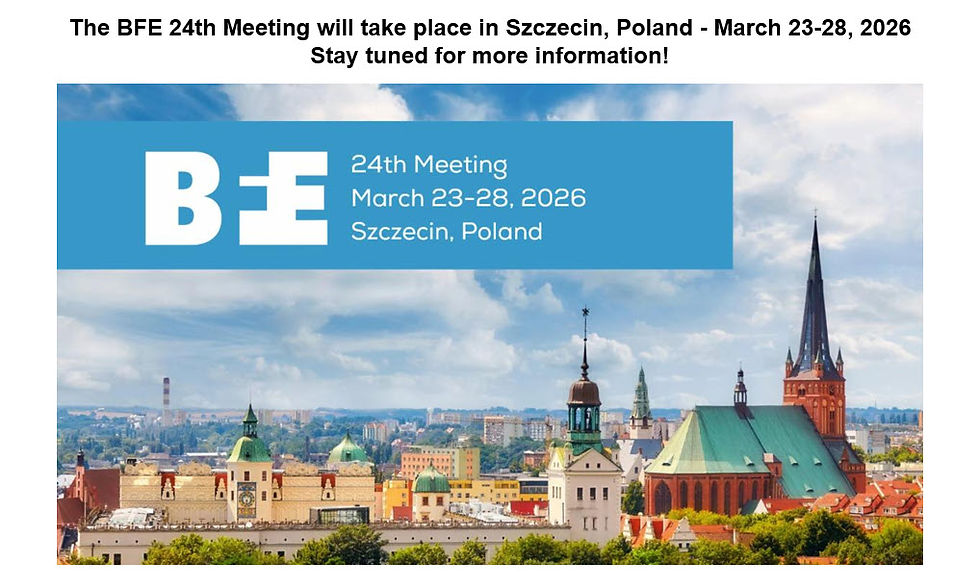HRV Experiment Planning, Data Analysis, and Data Reporting
- BioSource Faculty
- May 1
- 9 min read
Updated: Aug 1

1 | Purpose and Scope
The overview by Laborde, Mosley, and Thayer was commissioned to turn two decades of disparate heart-rate-variability (HRV) methodology into one coherent, clinician-friendly roadmap. It concentrates on the branch of HRV that indexes cardiac vagal tone, the parasympathetic influence on the sinoatrial node, because that signal has proved most robust for mapping emotion-regulation capacity, health risk, and treatment effects.
The authors' guidance encompasses the intersection of psychophysiology, behavioral medicine, and affective neuroscience, disciplines that all use HRV yet rarely follow identical protocols. By collating scattered recommendations on study design, signal acquisition, confound management, data cleaning, and statistical reporting, they aim to narrow the methodological latitude that undermines meta-analysis and reproducibility.
Finally, the article emphasizes translational value. Every section closes with pragmatic advice—sample-size numbers rather than equations, respiration cut-offs rather than debate—so that a hospital psychologist, a sports scientist, or a doctoral researcher can implement best practice without wading through technical annexes.
2 | HRV as a Clinical and Research Tool
Heart-rate variability represents the millisecond differences between successive R-R intervals on the electrocardiogram. When those intervals fluctuate widely in the high-frequency (HF) band of 0.15–0.40 Hz, they primarily mirror vagal brake activity; when variability collapses, it signals reduced parasympathetic influence and diminished flexibility.
Clinically, HF-HRV and its time-domain cousin RMSSD predict cardiovascular resilience, remission likelihood in depression, stress-reactivity profiles, and even post-operative complications. They offer a non-invasive biomarker that can be tracked repeatedly across the care continuum, making them attractive endpoints for behavioral and pharmacological trials.
For researchers, HRV supplies a window for bidirectional traffic between the brain and the body. Because parasympathetic modulation responds within seconds to emotional, cognitive, and metabolic demands, HRV can be coupled with tasks ranging from working-memory challenges to exposure therapy, enabling fine-grained tests of autonomic hypotheses previously confined to animal models.
3 | Why Updated Guidance Was Needed
The 1996 Task Force report defined HRV terminology and analytic windows but offered scant direction on experiment structure, confound documentation, or open data. In the ensuing years, laboratories improvised, producing an evidence base riddled with incomparable sampling rates, unreported respiration, and arbitrary artifact filters.
Meta-analysts now warn that pooled HRV effect sizes are distorted by such heterogeneity. Therefore, Laborde and colleagues collected every methodological refinement published since 1996—power analysis papers, respiration commentaries, software validations—and distilled them into a single article that could serve as a primer and a checklist.
Their final product promotes the same transparency norms that have transformed genetics and imaging: preregistration of analytic pipelines, deposition of raw inter-beat-interval (IBI) files, and disclosure of every transformation applied to the data. By doing so, the field can graduate from narrative replication claims to cumulative science.
4 | Choosing HRV Variables
When the goal is to isolate vagal tone, three metrics dominate: RMSSD, HF-power, and the peak-valley method. RMSSD excels in very short recordings and shows minimal sensitivity to breathing frequency; HF-power excels when respiratory data are available; peak-valley offers intuitive clinical feedback by matching inspiratory troughs to expiratory peaks.
Laborde et al. counsel abandoning the low-frequency/high-frequency (LF/HF) ratio as an index of sympathovagal balance. The ratio’s numerator (LF) does not map neatly onto sympathetic drive, and the denominator (HF) can be inflated or deflated by uncontrolled respiration, yielding physiologically opaque numbers.
Their pragmatic recommendation is to analyze at least two convergent vagal indicators and to reproduce the primary analysis with the alternative indicator. Consistent patterns across RMSSD and HF-power strengthen inferences, whereas divergence signals technical or theoretical problems that warrant investigation before publication.
5 | Design: Within-Subject First
Because HRV varies more between people than within the same person across sessions, a within-subject design maximizes statistical power and attenuates confounds such as medication, caffeine, or genetic predisposition.
Yet repeated exposure can breed habituation. Laborde and colleagues advise varying task content—using, for example, a Stroop color-naming task in one session and a stop-signal task in another—to probe the same construct without inducing learning effects. Counterbalancing conditions further shields results from order artifacts.
When between-subject comparisons are unavoidable, the authors recommend tight matching on age, sex, and recording time of day, because circadian influences alone can generate amplitude differences that dwarf the phenomena under study.
6 | Sample-Size Benchmarks
A distribution analysis of nearly 300 HRV effect sizes determined that Cohen’s classic thresholds (0.20, 0.50, 0.80) underestimate real-world variability. The recalibrated thresholds—0.25 for small, 0.50 for medium, 0.90 for large—translate into 233, 61, and 21 participants for 80 % power, respectively.
Most HRV studies published to date would therefore detect only medium-to-large effects, explaining frequent replication failures. The article urges investigators to run an a priori power analysis with software such as G*Power or the R package pwr and to report that calculation in the methods section.
By budgeting for adequate samples or converging on within-subject designs, researchers can move the field from exploratory to confirmatory science, a transition already demanded by journal editors and funding agencies.
7 | The Three Rs: Resting, Reactivity, Recovery
HRV manifests in two temporal modes: tonic (resting) and phasic (changes provoked by tasks). Tonic vagal tone generally predicts adaptive outcomes, yet exceptions arise in metabolic and eating disorders, illustrating the need for nuanced interpretation.
Phasic shifts—vagal withdrawal during effort and rebound during recovery—reveal how flexibly the autonomic nervous system allocates resources. A pronounced withdrawal can be adaptive during physical stress but detrimental during executive-function challenges that require sustained prefrontal engagement.
To capture both dimensions, Laborde et al. endorse a three-time-point structure: a seated baseline, a task period and a post-task period. Calculating change scores between baseline and task (reactivity) and between task and post-task (recovery) quantifies vagal agility, while a baseline-to-post comparison indicates total load.
8 | Controlling Confounders
Stable factors known to modulate HRV include age, sex, smoking status, habitual alcohol use, body composition, and cardio-active medication. Even within ostensibly healthy cohorts, tricyclic antidepressants and clozapine can suppress vagal indices, warranting either exclusion or statistical control.
Transient influences are equally potent. A sleepless night, a large meal, a double espresso, or vigorous exercise can all depress RMSSD for hours; consequently, participants should arrive well-rested, fasted for two hours, and caffeine-free. Simple measures such as offering a bathroom break before wiring can prevent artifactual spikes.
Whenever feasible, objective verification outranks self-report. Taking a quick blood-pressure reading or using point-of-care CO-oximetry for smoking history provides data that resist social-desirability bias and sharpen covariate modelling.
9 | Signal Acquisition Essentials
Electrocardiography remains the reference method because the full QRS complex allows unequivocal R-wave detection and manual artefact editing. Two pre-gelled electrodes placed beneath the clavicles or a modern two-lead chest patch yield clinical-grade signals with minimal fuss. Photoplethysmography is acceptable for resting recordings but should not substitute during movement or stress tasks.
Sampling rate governs temporal precision. The authors reaffirm 125 Hz as a lower limit yet recommend 500 Hz to safeguard against low-amplitude respiratory sinus arrhythmia, especially in children, athletes, and clinical populations with attenuated HRV.
Skin should be exfoliated with alcohol or mild abrasion to reduce impedance, and electrode cables secured to prevent motion artifacts. Small preparatory investments pay dividends when the time comes to edit records and defend results in peer review.
10 | Recording Length
Five-minute epochs remain the gold standard because they encompass at least ten cycles of the lowest HF boundary, ensuring spectral stability and comparability across laboratories.
For field studies or large epidemiological screens, one-minute recordings can suffice when RMSSD is the target, and multiple non-contiguous ten-second ECGs can be averaged to approximate the same value. These ultra-short options expand HRV research into ambulatory and high-throughput contexts.
Conversely, 24-hour Holter recordings illuminate circadian patterns and treatment durability. Laborde et al. caution against analyzing entire 24-hour spectra as single blocks; instead, they recommend computing five-minute windows to preserve stationarity and avoid conflating autonomic tone with physical-activity artefacts.
11 | Baselines That Matter
An optimal resting baseline is collected with the participant seated, knees at ninety degrees, feet flat, forearms resting on thighs, eyes closed and free of cognitive tasks. This posture stabilizes venous return and baroreflex activity, minimizing postural and attentional confounds.
At least five minutes of quiet acclimatization should precede the baseline to dissipate arrival-related arousal. Some laboratories use a neutral “vanilla” video to prevent mind-wandering; others prefer silence to avoid unintentional affective priming. Either choice is defendable, provided it matches the hypotheses under test.
Baseline contexts should mirror the later task environment wherever possible: the same room temperature, ambient noise, and lighting anchor tonic measurements and make subsequent reactivity estimates interpretable.
12 | Respiration: Monitor, Not Mutilate
Respiration modulates HF-HRV because cardiac vagal efferents are entrained to the breathing cycle. While that coupling has inspired calls to correct HRV for respiratory rate, Laborde and colleagues summarize converging evidence that such corrections strip away the very neurobiological variance of interest.
Their compromise is to monitor breathing—ideally with a thoracic strain gauge—or to estimate rate offline via the central HF peak or ECG-derived respiration. As long as spontaneous breathing stays between nine and twenty-four breaths per minute, HF-power remains a faithful vagal proxy, and RMSSD is still less sensitive to rate fluctuations.
Forcing paced breathing, even at each participant’s natural frequency, can perturb cognitive performance and produce unpredictable HRV changes; therefore, paced protocols should be reserved for biofeedback interventions rather than baseline assessment.
13 | Cleaning and Analyzing Data
Automatic filters embedded in software such as Kubios flag RR intervals that deviate sharply from local means, yet a visual review of the ECG trace remains indispensable. The article demonstrates that relying solely on a “very-low” Kubios filter can misclassify true beats and distort vagal estimates by eleven per cent.
For spectral analysis, autoregressive (AR) modeling outperforms Fast Fourier transforms by yielding smoother HF peaks and avoiding systematic overestimation. Authors must report model order, with eighteen coefficients, a common choice for five-minute data.
Open-source packages such as gHRV (R) and ARTiiFACT facilitate transparency because their code can be inspected and modified. Proprietary black-box tools should be supplemented with detailed algorithm descriptions to allow replication.
14 | Transparent Reporting
The GRAPH checklist introduced by Quintana and colleagues codifies thirteen reporting items spanning participant selection, IBI acquisition, cleaning, and HRV calculation. Laborde et al. endorse adopting the checklist verbatim in psychophysiological manuscripts.

They further advocate sharing raw IBI files, respiration traces, and analysis scripts as online supplements or in repositories such as OSF. Such openness allows independent teams to rerun analyses with alternative filters or parameters, accelerating error detection and theory refinement.
Uniform terminology also matters. Reporting both RMSSD and HF-power, along with the breathing frequency observed, enables readers to gauge whether apparent vagal changes might stem from respiratory drift rather than neural modulation.
15 | Integrative Summary
Laborde, Mosley, and Thayer translate complex signal-processing literature into a pragmatic code of conduct. Their recommendations—choose validated vagal indices, favor within-subject designs, sample fast, record breathing, inspect traces, report everything—equip clinicians to confidently assess autonomic flexibility and researchers to generate replicable data that can be meta-analyzed rather than merely compared.
By harmonizing design and analysis, the article lowers the barrier to entry for smaller laboratories, encourages multisite collaboration, and ultimately strengthens the evidence linking HRV to mental and physical health.
Key Takeaways
The RMSSD and HF-power are the most defensible vagal markers; avoid the LF/HF ratio.
Designing around the three Rs—resting, reactivity, recovery—reveals autonomic agility.
A 500 Hz ECG sampled for five minutes with respiration monitored but uncorrected yields gold-standard data.
Adequate power often requires ≥61 participants for medium effects or within-subject designs to compensate.
Use the GRAPH checklist, share raw IBIs, and visually vet every record to safeguard validity.

Glossary
autoregressive (AR) spectral analysis: a parametric method that fits a model to the inter-beat series to estimate power spectra, producing smoother and less biased high-frequency peaks than non-parametric fast Fourier transform.
baseline HRV: variability recorded under controlled resting conditions before any intervention, serving as a tonic measure of cardiac vagal tone.
cardiac vagal tone: parasympathetic modulation of heart rate mediated by the vagus nerve, typically indexed by high-frequency HRV metrics such as RMSSD and HF-power.
Fast Fourier transform (FFT): a non-parametric algorithm that decomposes time-series data into constituent frequencies but can overstate high-frequency power compared with AR methods.
high-frequency (HF) power: spectral power within 0.15–0.40 Hz, corresponding to respiratory sinus arrhythmia when breathing falls between nine and twenty-four breaths per minute.
low-frequency/high-frequency ratio (LF/HF): a traditional but physiologically ambiguous metric once thought to represent sympathovagal balance; its interpretation is now widely questioned.
root-mean-square of successive differences (RMSSD): the square root of the mean squared differences between successive R-R intervals; a robust, respiration-resistant time-domain index of vagal tone.
respiratory sinus arrhythmia (RSA): cyclic acceleration and deceleration of heart rate linked to the respiratory cycle; the physiological phenomenon underpinning HF-HRV.
sampling rate: the number of ECG samples captured per second; higher rates increase temporal resolution and reduce fiducial-point ambiguity.
three Rs (resting, reactivity, recovery): a tripartite experimental framework that captures baseline vagal tone, task-induced change and post-task rebound, enabling nuanced interpretation of autonomic flexibility.
References
Laborde, S., Mosley, E., & Thayer, J. F. (2017). Heart rate variability and cardiac vagal tone in psychophysiological research - Recommendations for experiment planning, data analysis, and data reporting. Frontiers in Psychology, 8, 213. https://doi.org/10.3389/fpsyg.2017.00213
Quintana, D. S., Alvares, G. A., & Heathers, J. A. (2016). Guidelines for reporting articles on psychiatry and heart rate variability (GRAPH): Recommendations to advance research communication. Translational Psychiatry, 6(5), e803. https://doi.org/10.1038/tp.2016.73
Support Our Friends










Comments